How To Identify Hot and Neutral Wire On Lamp Cord
Are you trying to connect your newly purchased lamp plug to your lamp?
Are you afraid of making a mistake that entirely damages the electrical components of the lamp or even other home appliances?
When dealing with any form of polarized wiring system, you need to get the live and neutral connections right to avoid shock hazards and other dangers.
This is why it is important to first identify the hot and neutral wires in your plug before connecting it to the lamp.
We acknowledge that not everyone knows how to do this, so we present you with a step by step guide on accurately pinpointing your lamp cord polarity simply using a multimeter.
Let’s get right in.
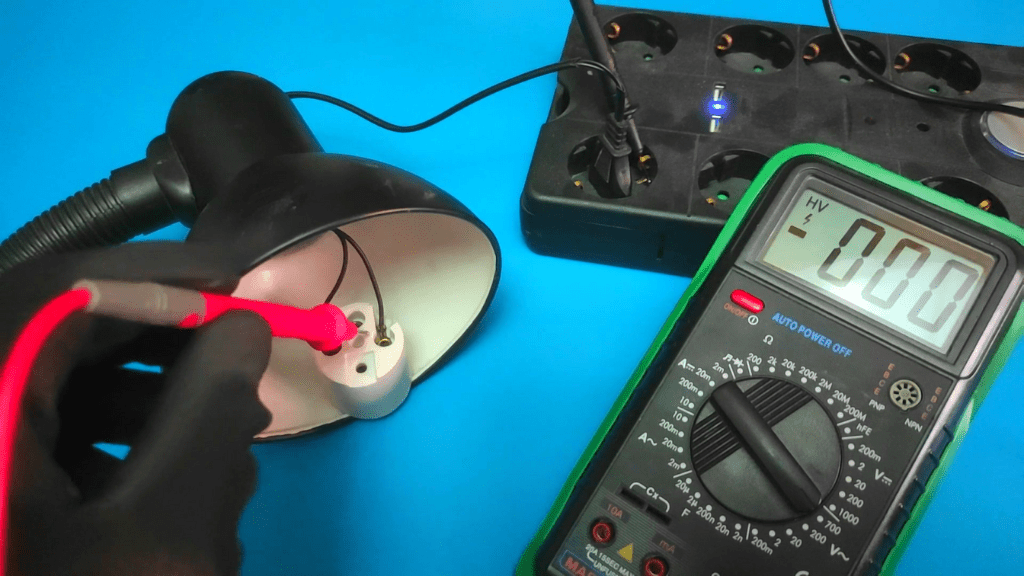
Necessary tools
To identify the neutral and hot wires in a lamp cord, you need
- Insulated gloves
- Voltage tester
- Multimeter
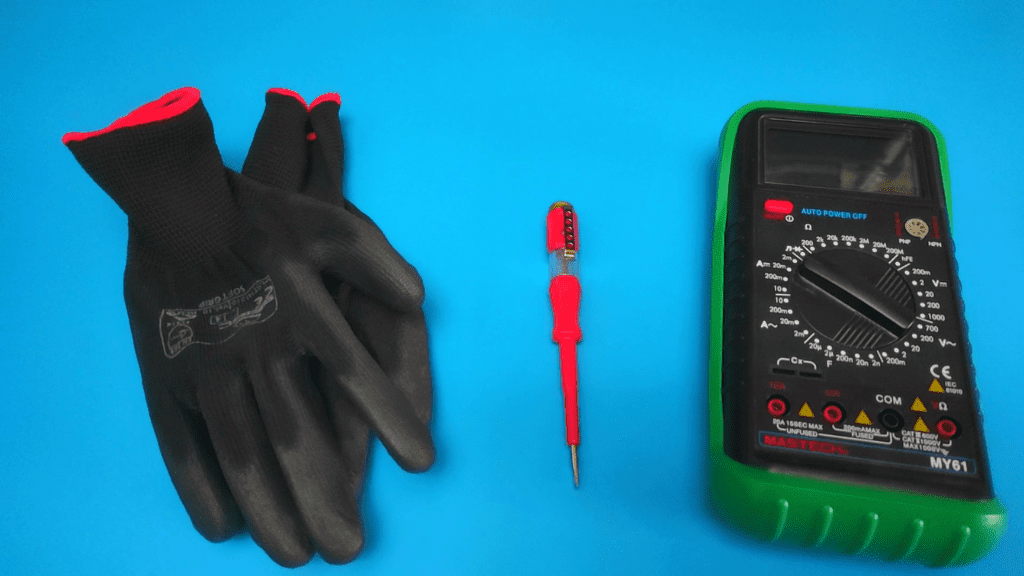
which is the hot wire on a lamp cord
The hot wire on a lamp cord is either the smooth wire, the black wire, or the wire that presents you with a voltage reading when tested with a multimeter. The first two methods of identification are mainly dependent on the lamp’s manufacturer.
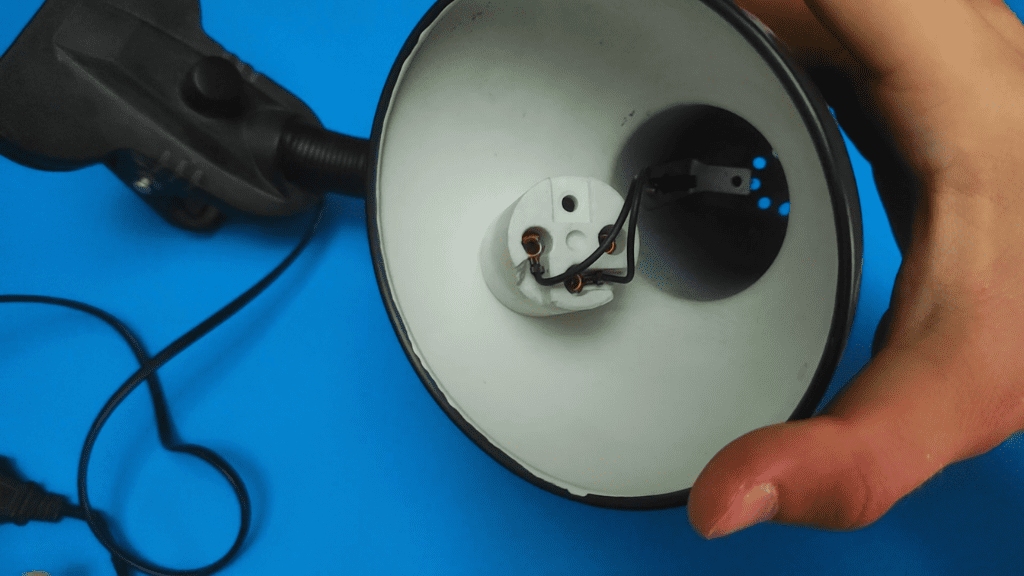
More detail on this will be provided.
Identifying Hot Wire Through Color
The easiest method of differentiating between wires in any home appliance is with the use of color codes.
Now, although a lot of countries have guidelines on what color represents which wire polarity, the manufacturer ultimately dictates this.
The common choice used to represent a live or hot wire on a lamp cord is black. However, a manufacturer can easily decide to use a white or red wire to represent a live connection.
Sometimes, the manufacturer may even use black or white for both the hot and neutral connections in your lamp cord. This is why other methods of identifying the hot wire are important.
Identifying Hot Wire Through Texture
One other way you may identify the hot wire in your lamp cord is through texture. Unlike the neutral wire which may have ridges or lines running along it, the hot wire is usually smooth.
This is another factor to look at in case the hot and neutral wires are of the same color. However, just like with color codes, the manufacturer plays a huge role in deciding what a texture means.
The manufacturer of your lamp may choose to use a rough-textured wire for the hot connection. How then do you accurately and unfailingly identify the hot wire without fearing any changes from the manufacturer?
Use a multimeter.
How To Identify Hot Wire In A Lamp Cord Using A Multimeter
The multimeter is the best tool to use to differentiate your lamp cord’s hot wire from the neutral wire, and you only have to follow these steps
- Wear Protective Equipment
To test the lamp plug’s hot wire, you need current to be running through it. This means you may get executed if you come in contact with live current and you don’t want this to happen.
Wear rubber insulated gloves before proceeding to test the hot wire with a multimeter. Also, make sure your hand doesn’t touch the multimeter lead while it is on the lamp cord wire.
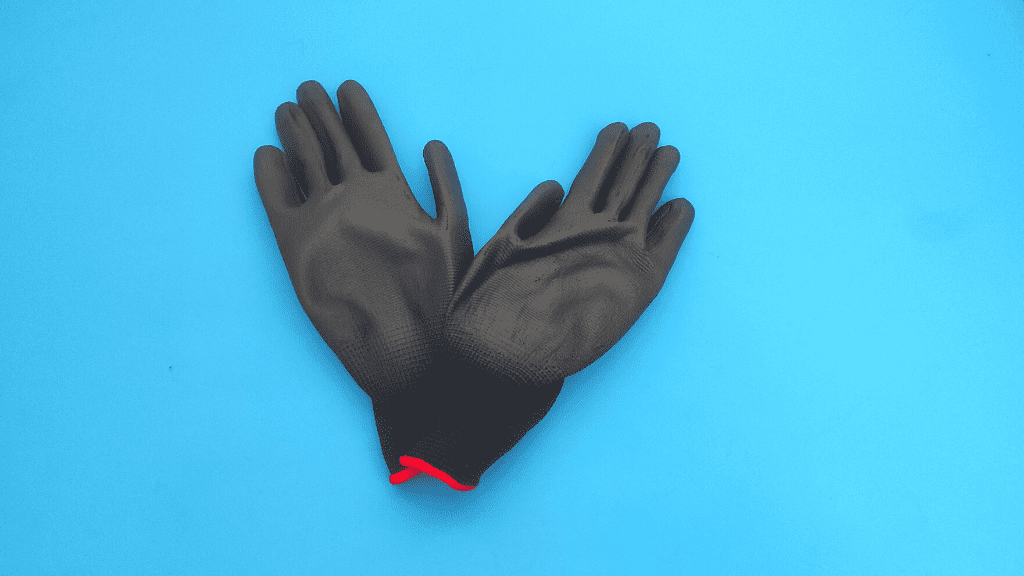
- Set Multimeter to A High AC Voltage
Your home makes use of AC voltage, so to test the lamp cord, you turn the multimeter dial to the AC voltage setting represented by “V~” or “VAC” on the multimeter.
Also make sure that the dial is set to the closest higher range to the power supply from your socket.
For instance, if you have a 120 volt supply, set the multimeter dial to the 200VAC range. If you have a 240 volt supply, set the multimeter to the 600VAC range. This helps with accuracy.
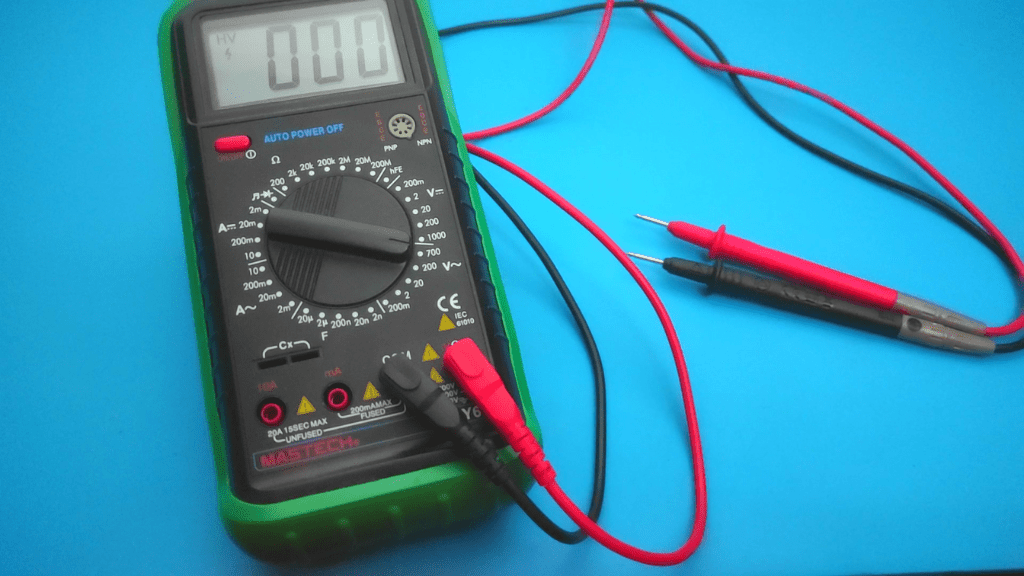
- Place Black Probe On Grounding
Place your negative multimeter probe on ground or any metal surface close by. This can be a metal screw or even a screwdriver.

- Place Red Probe On Each Wire
You need to test each wire for voltage to identify the hot wire.
With the lamp plug in your outlet and the light switch turned on, place the red positive multimeter lead on each of the wires to test them against the ground connection.
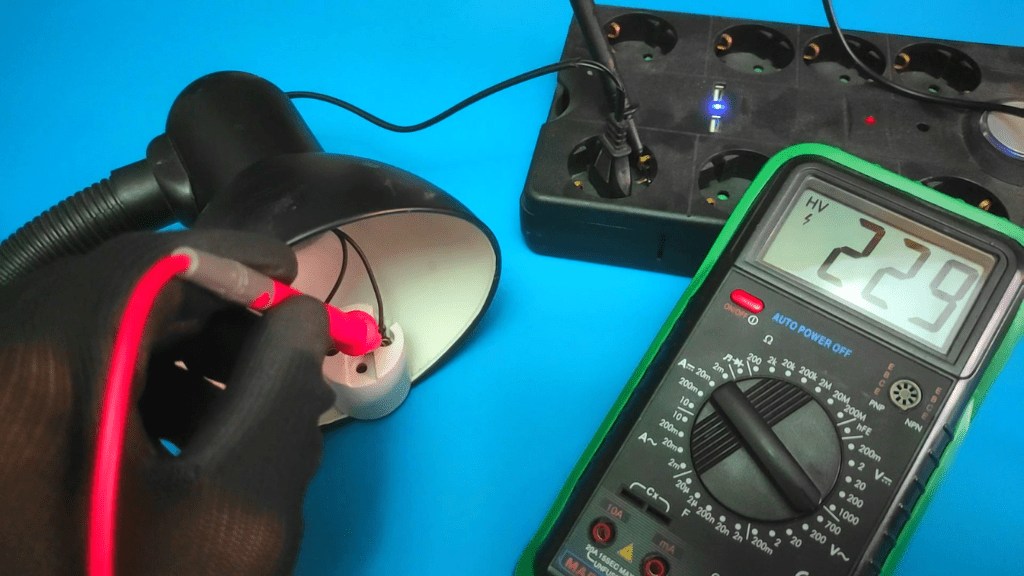
- Evaluate Results
The hot wire is the one that presents you with a voltage reading that is about the same as the power supply to the cord (120VAC, 240VAC, or any other voltage capacity).
This method is the best and most accurate. If you don’t get any reading at all, then there is no power supply to the lamp cord or there is a short within the cord’s electrical wiring.
Check out our video tutorial where we show this whole process in detail.
Identifying Hot Wire Using Continuity
Another way of using a multimeter to tell the polarity of your lamp plug wires is by testing for continuity between the wires and components on the lamp.
This method is for people that have the wire already screwed or soldered to the lamp.
The lamp fixture usually has a brass tab that connects to the bottom of your lightbulb. This is the live part of it connected to the hot wire.
Put the multimeter in continuity mode or the Ohms setting represented by “Ω”, place the black probe on the brass material, and place the red probe on each of the wires.
The one that induces a beep or low Ohms reading from the multimeter is the hot wire.
In addition to these, one other tool you may use to identify hot lamp cord wire is a voltage tester. With this, you simply plug your cord into a power supply source and place the tip of the tester on the wires.
The wire that causes a light to blink or a beeping sound from your voltage tester is your hot lamp cord wire.
How To Identify Neutral Wire On Lamp Cord
The neutral wire is the wire in your plug with either white insulation, ridges, or the one that produces a low voltage reading on the multimeter. The accuracy of the first two methods of identification depends on the manufacturer, while the multimeter test is the most accurate.
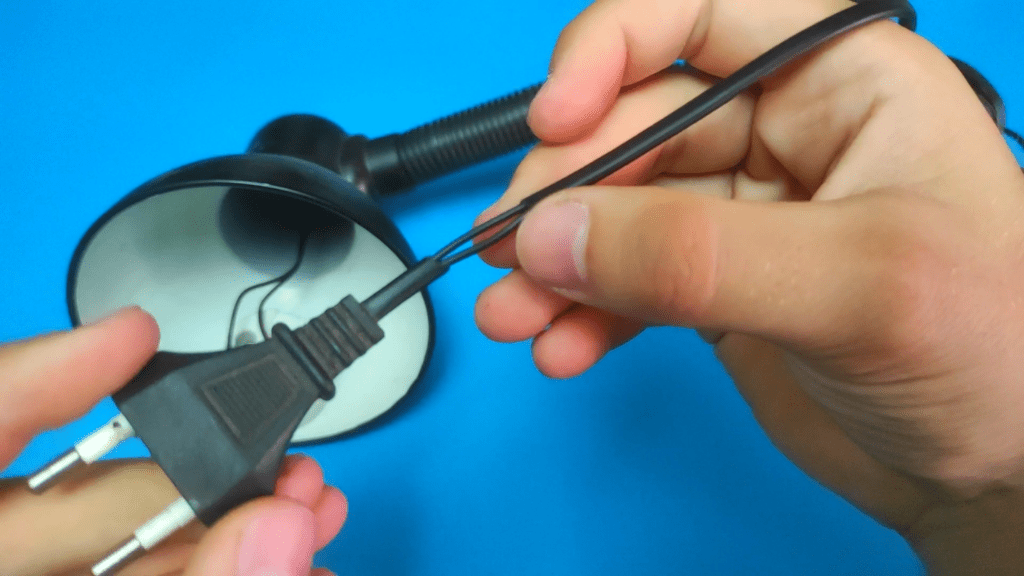
Let’s go deeper into these.
Just like identifying a hot wire in the cord, you either use color codes, textures, or a multimeter/voltmeter to identify your neutral wire.
Identifying Neutral Wire Using Color Code
With color codes, you’d expect the neutral wire to be either white or gray. These are the more popular home electrical wiring colors used in different countries, especially the US.
Now, the cord manufacturer may choose to use another color like blue, or even the same one used for the hot wire.
This means, just like with the hot wire, it isn’t every time the electrical wiring is correctly polarized using colors, and codes can’t be fully trusted.
Identifying Neutral Wire Using Texture
Another way the neutral wire is differentiated from the hot wire is through the texture of its insulation.
Neutral wires usually have ridges running along them, compared to hot wires that are smooth.
Nonetheless, a manufacturer may choose to (or mistakenly) mix this up, so the multimeter is your best bet.
How To Identify Neutral Wire In Lamp Cord Using A Multimeter
- Wear Safety Equipment
Protect yourself from electrical shocks by wearing rubber insulated gloves. Also make sure that your hands don’t come in contact with the multimeter leads when they are on the lamp cord wires.
- Set The Multimeter To A High AC Voltage
AC voltage is represented by “V~” or “VAC” on the multimeter, and also comes in two ranges; 200VAC and 600VAC.
To test the polarity of your wires in the most accurate manner, set the multimeter dial to the closest higher range to your power supply.
- Place The Black Probe On Any Metal Surface Closeby
Ground the black negative multimeter probe on any metal surface you have close to you. This could either be any piece of metal in your home, like a screw, a spanner, or even a spoon.
- Place the Red Probe on Each Lamp Cord Wire
Now, with power being supplied to the plug, you test each of your lamp cord wires against the ground connection by placing the red positive multimeter probe on them.
You place the multimeter lead on a part of the wires without insulation.
- Evaluate Results
The neutral wire is the one that presents you with a very low voltage reading compared to the other wire or your expected power supply.
This is the most accurate method of identifying it, and the manufacturer’s choice doesn’t count here.
Identifying Neutral Wire Using Continuity
You may also tell which wire is neutral by checking for continuity between the cord wiring and the components in your lamp.
This is for individuals that have lamp cords that are already connected to the lamp either through screws or solder.
To do this, set your multimeter to continuity mode or Ohms, usually represented by “Ω”. Without any power supply, you then place the black lead on the screw thread or metal bulb holder in the lamp. This is the metal part that allows the lamp to hold the bulb tightly.
Now, place the red lead on each of the wires. The wire that makes the multimeter beep or show a low Ohm value is the neutral wire.
Conclusion
Identifying the hot and neutral wires in your lamp cord isn’t the hardest thing to do, especially when it is manufactured using the right color codes and textures.
Nonetheless, there may be mix-ups, so the most accurate method is to use a multimeter to either check for voltage or continuity within the lamp cord components. You may also use a multimeter to test the ground connection if you have three wires.
Frequently Asked Questions
Does It Matter Which Wire Goes Where On A Lamp?
Yes, it matters that you get the wiring of a lamp cord right. Although the lamp still works, placing the hot wire where the neutral wire is meant to be makes the metal parts of the lamp shock hazards.
What Happens If You Wire Live And Neutral Wrong On A Light?
Reversing the hot and neutral wiring on light creates a shock hazard. This is because some external metal components are energized when the hot wire is connected to the neutral lamp screw thread.

Author
Alex Klein is an electrical engineer with more than 15 years of expertise. He is the host of the Electro University YouTube channel, which has thousands of subscribers.
